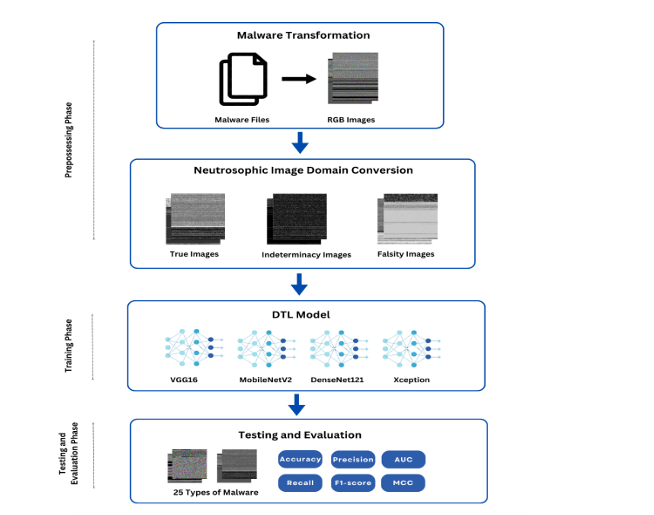NSDTL: A Robust Malware Detection Framework Under Uncertainty
Keywords:
Neutrosophic Set; Deep Transfer Learning; Malware detection; IoTAbstract
The Internet's rapid expansion and the current trends toward automation through
intelligent systems have given malevolent software attackers a veritable playground. Numerous
gadgets are effortlessly connected to the Internet, and a lot of data is being collected. Consequently,
there is a growing concern about malware attacks and security threats. Malware detection has
emerged as a research focus. However, there are challenges in the research, such as noise,
uncertainty, and ambiguous data. The study proposes a novel framework NSDTL, that achieves
state-of-the-art malware detection and classification results to address this changing threat
landscape. NSDTL leverages a neutrosophic set and advanced transfer learning techniques. There
are three different kinds of images in the neutrosophic domain: True (T) images, Indeterminacy (I)
images, and Falsity (F) images, which deal with uncertainty. The MaleVis dataset was used for
experiments on multi-class malware classification, and the findings show that NSDTL significantly
outperforms current models. This study emphasizes how crucial it is to combine transfer learning
with a neutrosophic set at the forefront of the continuous fight against changing cyber threats.
Downloads

Downloads
Published
Issue
Section
License
Copyright (c) 2024 Neutrosophic Sets and Systems

This work is licensed under a Creative Commons Attribution 4.0 International License.






